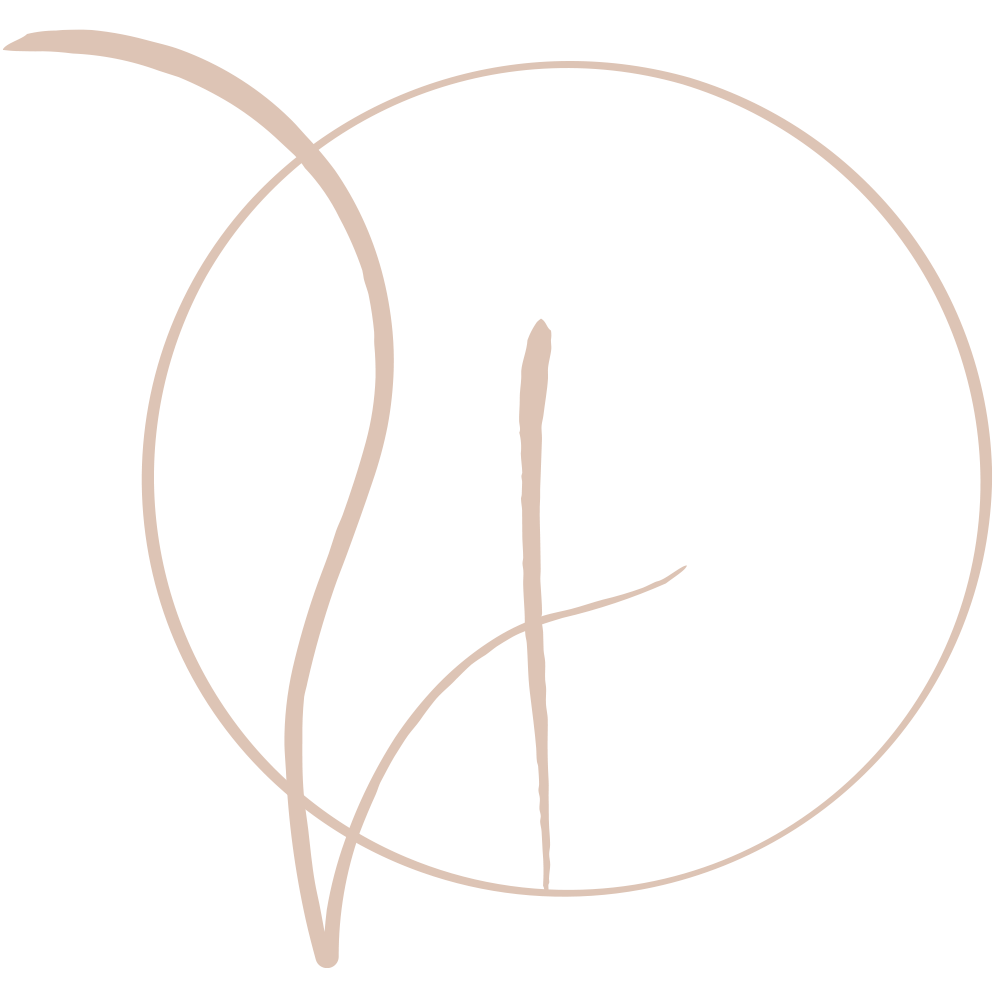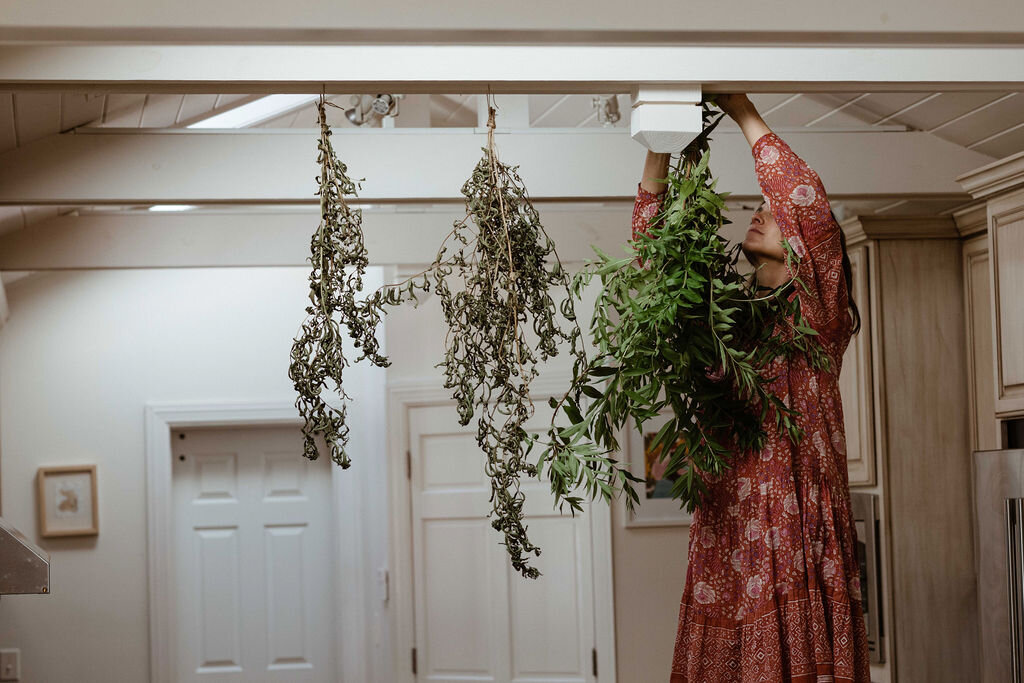Tea Journey: Grow Your Own Teas / Part 1: Winter Planning
The garden is Mother Nature’s classroom.
Here, we cultivate the sense of peace and self-sufficiency that comes from growing our own food and medicine. Here we are reminded that we are completely provided for - that we already have everything we really need.
Join me each season to learn how to grow your own botanical infusions. We will start in the Winter, a time for planning and visioning. We will plant and cultivate throughout the spring and summer months. By Autumn, we will be harvesting and drying healing herbs for steeping all year long. All the while, we will be sowing seeds of intention, watering and weeding them with care and experiencing the wise ways of nature which apply both in our gardens and in ourselves.
Get started in learning how to grow your own herbal tea blends.
Part 1: Winter Planning
Some of my favorite memories from the days that I spent living and working on organic farms in my twenties were of sitting by the fire in the winter months with a hot cup of tea, a few friends and a pile of seed catalogs. These dark and cold days were for resting and reflecting, for dreaming and for planning the following year’s garden.
When the long days and hard sun of summer have passed, we naturally like to turn inward, to seek the light inside, to take a slower pace and to spend more time doing all of the things that will restore our energy, nourish our bodies and keep us warm and protected. Around the world, Winter celebrations revolve around acknowledging the past (by giving thanks for and feasting on the fruits of our labor) and welcoming in the future (by celebrating the end of one cycle and the beginning of another)!
Step 1: Reflection
Before we can begin to plan for next year’s garden, we must reflect on the year that has come to pass. So, steep a cup, light some incense and grab a journal....
Keeping in mind both your actual garden (whether this is a pot on a sunny porch or a piece of land that you have cleared for planting) AND your inner garden, ponder the following questions:
What worked well over the course of the last year? What do I want more of? What can I commit to doing over the next circle around the sun to cultivate more of what makes me my best and less of what does not? For example, the lettuces were amazing and I loved making vibrant salads all spring; I will plant more. Or, the extra time I had with my family and friends brought me such deep joy. I will travel less and be more present with those I love.
What did not do so well? What will I leave behind next year? What can I do to create change? For example, the tomatoes did not ripen. I will plant them earlier this year and try a smaller or shorter growing season variety. Or, I spent too much time on the phone and not enough time in nature or with family. I will turn off the phone by 6 each evening and have tea outside each morning.
Are there any structural issues to be tended to? Any systems that can be amended? What can I prioritize accomplishing over the Winter months to make sure that when Spring comes, I have fertile ground and working systems to support my garden? For example, I could use a wire mesh under the garden to keep moles out. Or, I would be more satisfied if I went to sleep earlier and spent less time with people who did not bring love and light into my life.
Step 2: Visioning
Winter is the most potent time of the year for dreaming, both literally and figuratively. Dreams tend to be more vivid in the winter months and if you keep a dream journal or sip on some dream enhancing herbs (mugwort, chamomile, bacopa, any true tea from the Camellia sinensis plant) before you fall asleep, you can tap into the universal potential and wisdom of your subconscious mind. And, believe me, there are some real gems in there! Did you know that Google, the Theory of Relativity, the Periodic Table and Frankenstein were all conjured in dreams?
The short days, subdued light and enhanced stillness make for fertile dreaming during your waking hours as well! I love to sit in front of the fire in the evening with an endless steaming cup of old Puerh tea and let my mind wander as I watch the flames dance!
Here are a few questions to ponder to catalyze your visions!
What health property or emotion would I like to foster in myself or for my community? For example, a sense of calm, mental focus, sustained energy or courage. There is an herb for that!
Where would plants like to grow in my yard, in my house or on my patio? What is the sun like in those spaces? What does that space look like, for example, blossoming with chamomile in the Summer, with a flowering tea plant in the Autumn or covered with sweet mint in the spring? Can you see it?
Step 3: Buying Seeds and Plants
Now that you know where you have been and you can see where you are headed, it is time to choose your plants! For now, just decide what you want to buy (see my suggestions below) and place your orders (see my suggestions on resources below). Most companies will ship live plants at the appropriate times in the Spring and Autumn. You will want to make sure you have seeds by March!
These are my 5 favorite perennial garden herbs to grow for steeping:
Lemon Verbena: This joyful and beautiful plant smells amazing and makes a calming infusion when steeped. It is hardy, prolific, low maintenance and returns year after year with no effort. Plant it in a sunny spot in the Spring and harvest the following Autumn. Buy a small plant to transplant into your pot or garden.
Borage: This is one of my favorite flowers to have in the garden. The baby blue flowers are beautiful on salads and soups and can even be collected to make into homemade wine. Borage is said to give you courage, perhaps because it is good for the heart. The flower and leaf also reduce inflammation, strengthen the lungs and uplift your mood. Borage is an annual, so should be replanted each year. Buy the seeds as they are easy to start.
Stinging Nettle: My favorite memories of this potent healing herb are from summers spent at my grandparents summer cottage in Finland. It was served in a nutritious soup with potatoes, foraged from the forests where we also found berries and mushrooms and included in the shampoo that we kept in the sauna to make our hair shine!
Today, I drink it a few times a week to keep my blood, bones and hair healthy. It is high in iron, magnesium, A and B vitamins, folate and and calcium. I promise that you will notice a difference in your overall sense of wellbeing and in the condition of your hair if you drink it regularly. Buy a small plant to transplant into your pot or garden.
Mint: I like peppermint, spearmint and some unique varieties like pineapple mint and chocolate mint. It is true that mint can get out of hand, but if you have some space for it to wander, there is nothing better than a bed of fragrant mint for steeping (fresh or dried) or making into lemonades, chutneys and jams. Buy a small plant to transplant into your pot or garden.
Chamomile: I love a chamomile lawn. It’s soft and aromatic and you can harvest it’s calming flowers with scissors in the late spring or summer.. Buy the small plugs (baby plants) to scatter throughout an area so that it can create a blanket of chamomile.
These are my 5 favorite places to buy organic and heirloom seeds and plants:
Seed Savers Exchange https://www.seedsavers.org
Strictly Medicinal Seeds https://strictlymedicinalseeds.com
Johnny’s Organic Seeds https://www.johnnyseeds.com
Territorial Seed Company https://territorialseed.com
Renee’s Garden Seeds https://www.reneesgarden.com
Happy soul gardening. I will see you back here in the Spring for planting seeds!
Share:

